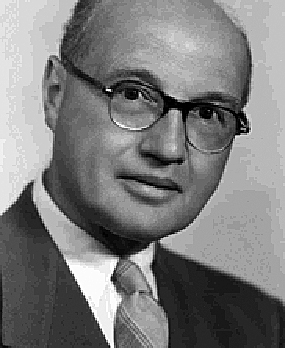Dr. Isaak Maurits Kolthoff:
How he has transformed the scene
The Father of Analytical Chemistry
Izaak Kolthoff published nearly 1,000 scientific papers, authored numerous textbooks – including a 30-volume treatise on analytic chemistry that is the forbearer of modern textbooks — and became regarded as the "father of analytical chemistry" due to his passion, originality and insight. But at one time, he was simply an eager young teen in his mother's kitchen.
During his first high school chemistry course, Kolthoff enthusiastically set up a laboratory in his family's kitchen. One night, his mother was making chicken soup for a special dinner and mistakenly added baking soda (sodium carbonate) instead of salt (sodium chloride.) Fifteen-year-old Kolthoff came to her aid, adding hydrochloric acid to the soup and raising its pH factor until a strip of blue litmus paper turned pink. Kolthoff later recalled that the soup was fine.
One-Year Turns Into An Entire Career
The youngest of three children, Kolthoff was born in the Netherlands in 1894. He began his studies at the University of Utrecht, and after graduation remained on as a conservator and lecturer. In 1927, he was offered a one-year appointment at the University of Minnesota's school of chemistry, with an annual salary of $4,500. In his charmingly understated acceptance letter, Kolthoff wrote, "I may assure you that [on] my side I will try to do my duty as well as possible and I hope that your expectations will not be disappointed."
Kolthoff's one-year temporary position turned into a permanent one, and he spent the reminder of his career at the University of Minnesota. He even rebuffed the efforts of other institutions — including his alma mater, the University of Utrecht — to recruit him. Kolthoff officially retired in 1962, but remained an active researcher until the late 1980s.
A Man Who Used His Head to Follow His Heart
Kolthoff's diverse research covered more than a dozen areas of chemistry, including proton transfer reactions, iodometry, voltammetry, emulsion polymerization, and much more. He's widely credited with creating a solid scientific foundation for analytical chemistry. As his Ph.D. student James J. Lingane noted, "Analytical chemistry has never been served by a more original mind, nor a prolific pen, than Kolthoff's."
Kolthoff's accomplishment with the most direct public impact came during World War II, when U.S. access to natural rubber was cut off due to Japanese occupation of Southeast Asia. Thus, the federal government created the American Synthetic Rubber Research Program to address the loss of this strategically-necessary material. Kolthoff, whose family had been devastated during Nazi occupation of the Netherlands, quickly assembled a large research group. Ultimately, their work led to the incredibly fast creation of a huge synthetic rubber industry that was able to meet the needs of the U.S. and Allied forces during World War II, and beyond.
After World War II, Kolthoff became politically active and was deeply engaged in humanitarian efforts. He helped German scientists persecuted by Hitler find jobs at the University of Minnesota, and was an early supporter of the United Nations. He also was an early critic of Senator Joseph McCarthy, campaigned against investigations of suspected Communists and led protests against nuclear weapons.
A Lifetime of Achievements
Throughout his lifetime, Kolthoff received many awards, including the 1949 William H. Nichols Medal, one of the highest honors of the American Chemical Society. He was knighted in the Netherlands and received many other honors, including the Robert Boyle Medal from the Royal Society of Chemistry in England, the Charles Medal of the Charles University in Prague, and the Fisher Award of the American Chemical Society. He received Honorary Doctor of Science degrees from universities around the world, and was a member of the National Academy of Sciences, the American Academy of Arts and Sciences, the American Pharmaceutical Association. In 1972, the University of Minnesota named its new chemistry research building Kolthoff Hall in his honor.
Kolthoff never married, and lived most of his life just a few steps from the building that was named in his honor. He died in 1993, just a few months after his 99th birthday.

